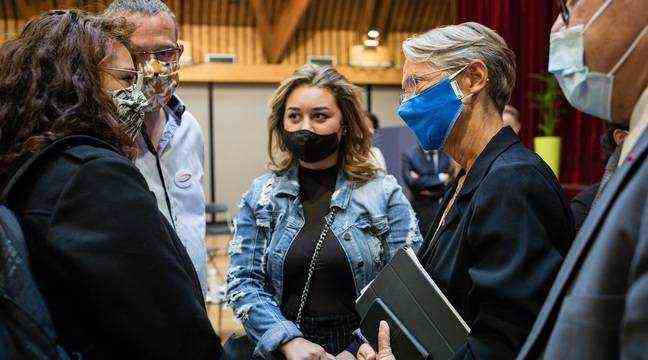For once, Emmanuel Macron does not deny the heritage of François Hollande. According to Challenges, the Head of State could announce this Monday evening, the massive extension of the “youth guarantee”. The device, which aims to bring young dropouts back to employment, was created by its predecessor in 2013. This announcement would not be a surprise, since the executive has been working for months on the idea of a “youth guarantee. universal ”. Concretely, a million beneficiaries could benefit from it in the long term, against 200,000 initially budgeted for in 2021.
This figure of one million does not come out of nowhere. According to INSEE data, approximately one million young people aged 15 to 25 are NEETs, that is to say “neither in employment, neither in studies, nor in training”. However, the “youth guarantee” is aimed precisely at this population. In exchange for positive integration approaches (follow-up to workshops, individual interviews, internships and company immersion), beneficiaries receive an allowance of up to 497 euros per month, for a maximum of 18 months.
An effective “youth guarantee”?
If the executive places so much hope in the device, it is because it considers it effective. According to a report carried out in 2019 by Dares, “29% of beneficiaries are in employment [dont alternance, intérim, stage] eight months after entry into the system, 41% after 19 months ”. Almost all of the young people monitored (90%) also state that they are “satisfied” with their job. In addition, in a comparable situation (age, level of training, income), the Dares considers that a beneficiary of the “youth guarantee” is more likely to find a lasting job than a person without specific support.
But if the “youth guarantee” is put forward so much, it is also because it corresponds to the philosophy assumed by the Head of State on employment: granting too much money – without compensation – to precarious young people. would not encourage them to find work. Simply
listen to the interview again Emmanuel Macron to Brut, in December 2020, to be convinced of this: “We fought against poverty with minimum social benefits and it is a given (…), but the difficulty we have (…), c is that if the gap [de revenus] between activity and non-activity is not enough, you create systems of disincentives to return to work ”.
Cheaper than the “young RSA”
This explains why the President of the Republic declared in the same interview that he was not “a big fan” of the “young RSA”, that part of the left would however like to see implemented for 18-25 year olds. The payment of the RSA is in fact not subject to counterparties, when the youth guarantee “presupposes an integration process”, recalled Emmanuel Macron. A position criticized by the deputy (ex-LREM) Aurélien Taché: “Young people want, as much as everyone else, to work!” Touching the RSA is not a prospect for anyone, ”he was annoyed last year.
in the world.
Finally, another argument may also have come into play: the cost. According to Challenges, the Elysee has budgeted two billion euros to extend the “youth guarantee”. A “young RSA” would cost five billion euros each year.
More means
If the executive decides to make a “universal youth guarantee”, it will nevertheless be necessary to avoid two major pitfalls. The first is the ability to support. For the moment, the local missions, pillars of the system, are sized to accommodate 200,000 young people per year. A recruitment campaign for 2,000 advisers was also launched in May in order to cope with the influx of beneficiaries. Going to one million young people monitored, or five times more, will therefore require an even more massive effort. “Today, there is on average one adviser for 50 young people,” indicates Stéphane Valli, president of the National Union of Local Missions (UNML). If we want to keep the quality of support, we have to stay around this ratio ”.
The second pitfall is the ability to attract all potential beneficiaries. In a report published at the end of 2020, the Youth Policy Orientation Council (COJ) underlined the need to fight against “non-use” of the system. “We have” invisible “young people who are not known to the public employment or integration service, recognizes Stéphane Valli. We must develop the means to meet them: go to neighborhoods, increase partnerships with youth associations … The goal is to work with all social actors to identify these young people who do not surrender on their own in local missions ”.

